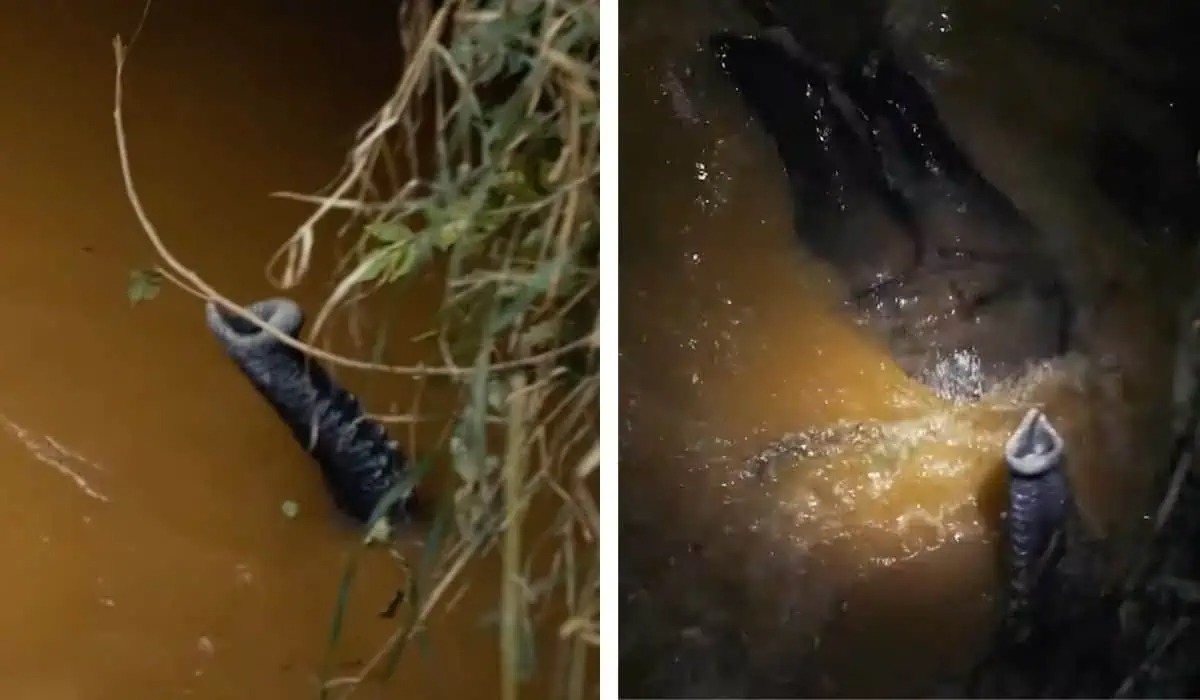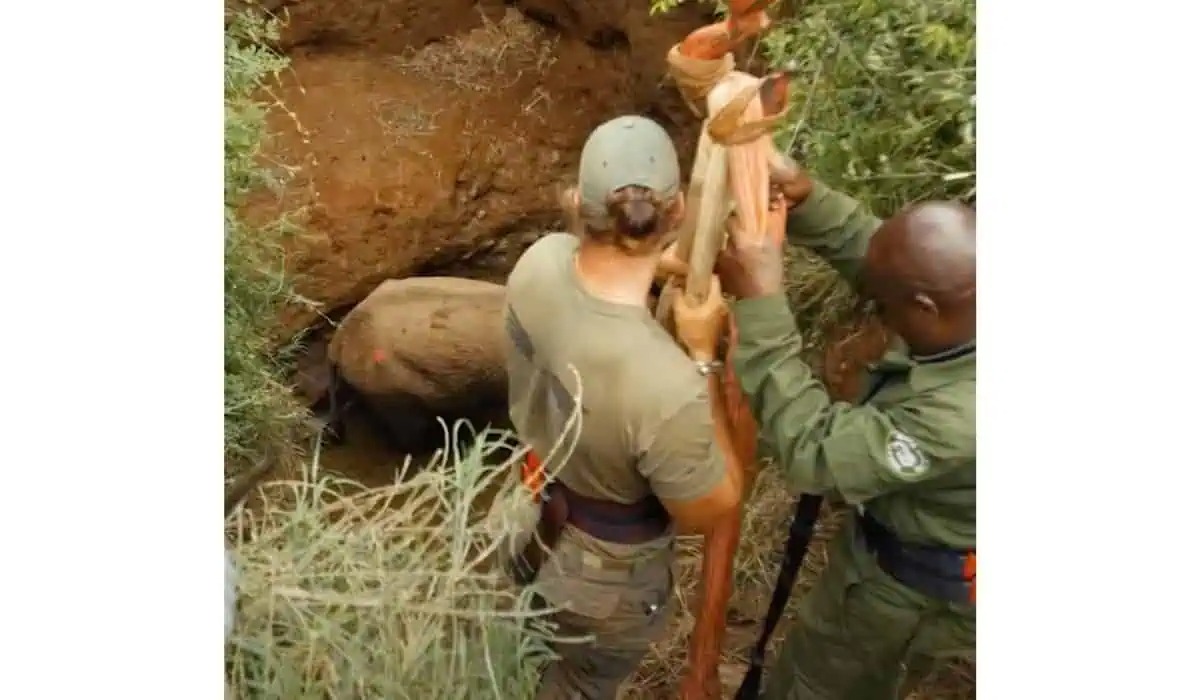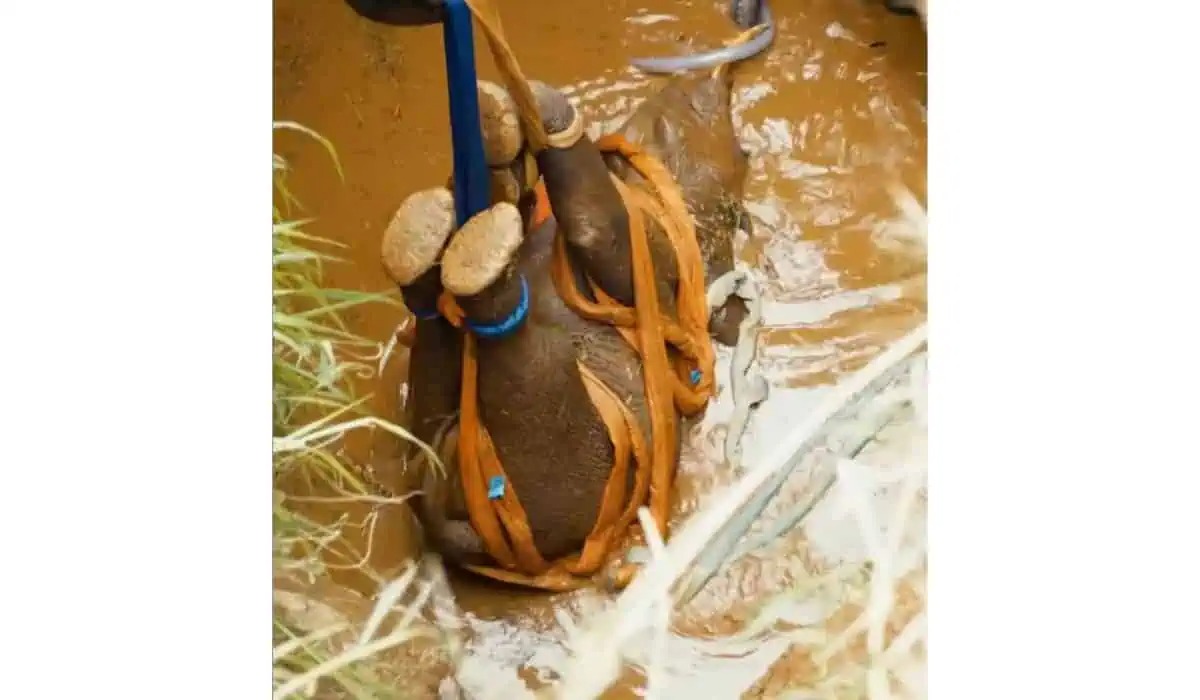This young little elephant ended up in a life threatening situation where it could barely keep its trunk above water and dangerously close to drowning. Thankfully, it lives to see another day thanks to an amazing and fearless team of rescuers.

The event began when local villagers near a large river spotted a young elephant struggling for its life in a well. They quickly alerted the nearby wildlife rescue team, initiating a dramatic race against time to save the distressed animal.The response was swift. Equipped with ropes, water pumps, and a vehicle to eventually haul it out of the well, the rescue team headed towards the well. Their mission was clear: to reach the elephant before it got too tired to keep its trunk above water.As the rescue team arrived, they found the elephant barely keeping its trunk above water, using it like a snorkel to breathe. Almost completely submerged, the elephant was treading water and using all of its

energy to just survive.The first step was to pump as much water as possible out of the well; this went on throughout the whole night with the use of three water pumps. By the morning, they could start the next step: tying ropes around the elephant’s huge body so that they could lift it out of this life-threatening situation.The team sedates the elephant and then jumps into the well to secure the knots, all the while making sure to keep its trunk above the waterline. Once they were certain that the ropes were secure, they start hauling the elephant out of the well, and doing their very best to make sure to not injure it as they carefully set it down on dry ground.Once on dry land, veterinarians quickly attended to the elephant. It was dehydrated and fatigued but had no major injuries. The team provided immediate medical attention and hydration, staying by the elephant’s side until it regained strength.As grown ups, elephants are known for their strong swimming abilities. However, young or inexperienced ones can easily panic, leading to dangerous situations like this one.This incident highlights the

critical role that wildlife rescue operations play in protecting vulnerable animals. These teams are often the difference between life and death for wildlife caught in perilous situations.As human populations expand, wildlife habitats are increasingly encroached upon, leading to more frequent animal-human conflicts and accidents like this one.Bodies of water are essential for wildlife but can become deadly during the rainy season when they overflow or create strong currents that become too powerful for even the strongest of swimmers.The quick thinking and involvement of the local community were vital in saving the elephant’s life, showcasing the importance of local knowledge and cooperation in wildlife conservation efforts.This rescue underscores the need for continuous training and preparedness of rescue teams to handle various wildlife emergencies effectively.Discussing global conservation efforts, the article emphasizes how protecting elephants requires international cooperation and funding.Exploring how drones, GPS tracking, and other technologies are revolutionizing wildlife rescue operations, making them more efficient and effective. In this case, the rescue hadn’t been possible without the water pumps and the

vehicle hailung the elephant out of the well.Addressing the often overlooked aspect of wildlife rescue, the psychological recovery and rehabilitation of animals after such traumatic events.An overview of the legal protections in place for wildlife, including international treaties and local laws that help prevent harm and provide resources for rescue operations.Focusing on the need for public awareness campaigns to educate people about the dangers and precautions to keep both wildlife and human communities safe near wildlife habitats.Debating the ethical implications of human intervention in natural wildlife activities, where the line should be drawn to help without causing further disruption.
